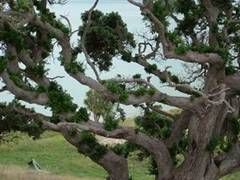Animal Pests
Over the past year the Council has moved in a new direction in terms of pest control. The ‘once over' control programme for possums had been completed and now the focus is to assist groups of land occupiers committed to protecting economic, biodiversity and/or cultural values. This is site specific integrated pest management that is, targeting several pests (including pest plants and insects), recognising the ecological dynamics of an ecosystem. Some plants pests can expand following animal pest control operations, highlighting the need for integrated pest control.
Four Community Pest Control Areas (CPCA), covering a total of 6840 hectares, were set up in 2005-2006, in Oneriri, Maungaraho Rock (near Dargaville), Te Kuri (pouto) and Petley Road (near Matakohe), and stage one of their respected management plans undertaken. Species targeted include possums, mustelids, cats, rats and pest plants. As part of this programme operational and outcome monitoring is undertaken.
Operational monitoring shows that work to date has been very successful in the Oneriri CPCA. The Possum Activity Index (PAI) was very low at 4% and similarly the Rat Activity Index (RAI) was low at 1%, indicating an excellent control has been achieved. To assess the success of mustelid control 50 tracking tunnels were laid on a grid system throughout the 3748 hectare Oneriri site. No sign of mustelids was recorded during the 21 days the tunnels were deployed. Monitoring at the other CPCA projects is currently underway.
 Excellent shoot regrowth on a pohutukawa tree in the Oneriri CPCA.
Excellent shoot regrowth on a pohutukawa tree in the Oneriri CPCA.
Outcome monitoring to date at the Oneriri CPCA has been limited to the establishment of photo points to capture changes in native biodiversity as pest populations diminish. Already substantial recovery of foliage has been observed indicative of a greatly reduced possum population.
Using the Forest Monitoring and Assessment Kit (FORMAK) communities, with Regional Council assistance, will be implementing comprehensive outcome monitoring at all CPCA sites (where appropriate), over the next few years to document the recovery of biodiversity as a result of pest control activities.
See the Biodiversity section for more information on the Forest Monitoring and Assessment Kit.
